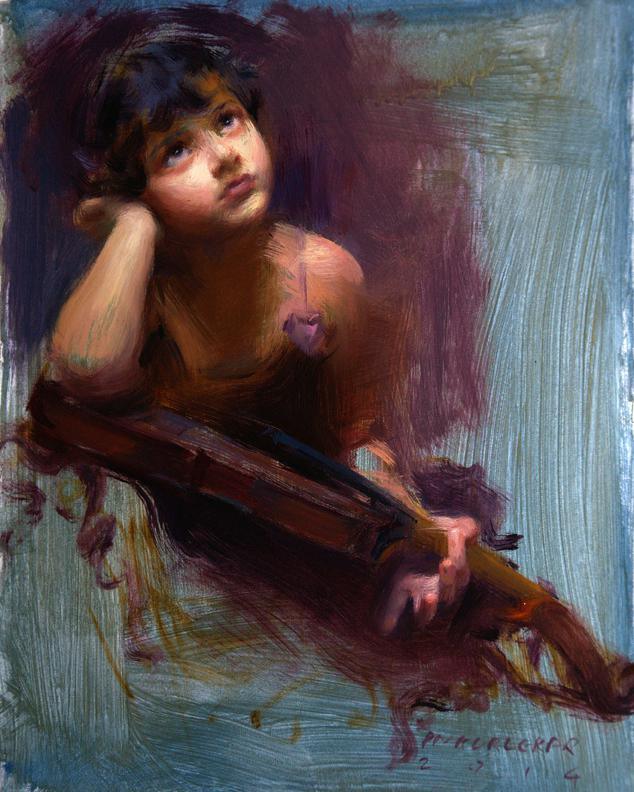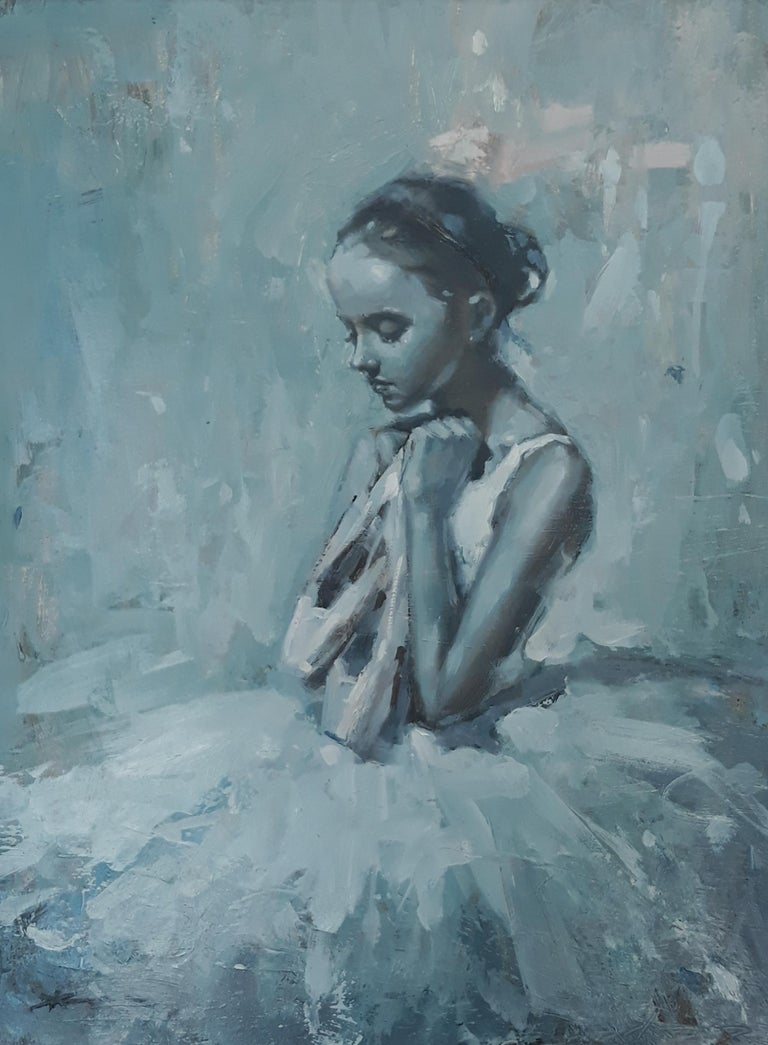Why Figurative Oil Painting Remains a Timeless Choice for Artists
Why Figurative Oil Painting Remains a Timeless Choice for Artists
Blog Article
The Evolution of Metaphorical Oil Paint: Comprehending Its Historical Significance and Modern Interpretations
The advancement of figurative oil painting offers as a compelling lens with which to examine the interaction in between artistic expression and historic context. Contemporary musicians, drawing from this abundant heritage, are currently reinterpreting the human figure in methods that test conventional stories.
Origins of Figurative Oil Paint
The origins of metaphorical oil paint can be traced back to the very early Renaissance in Europe, especially in the 15th century. This duration marked a substantial departure from the stiff kinds and flat depictions particular of middle ages art. Musicians began to explore naturalism, stressing the human figure and its emotional expression. The growth of oil paint enabled for better deepness of color and detail, improving the realistic look and vibrancy of their job.

In this transformative era, numbers were often shown within contextually abundant atmospheres, showcasing not only their physical attributes yet additionally their mental states. Leaders such as Jan van Eyck and Titian used the medium's versatility, employing layering strategies to attain brightness and structure. This development facilitated the representation of complex materials and the subtleties of complexion, adding to the growth of portrait and narrative scenes.
Moreover, the Renaissance emphasis on humanism cultivated a recognition for distinctiveness, which consequently influenced musicians to produce more relatable and vibrant numbers - figurative oil painting. As a result, figurative oil painting became an effective automobile for storytelling and psychological interaction, laying the groundwork for future imaginative movements and styles
Trick Historical Activities
Significant historical activities have actually shaped the advancement of figurative oil paint, each contributing special viewpoints and strategies that expanded the tool's opportunities. The Renaissance noted a zero hour, emphasizing realistic look and the human form, with musicians like Leonardo da Vinci and Michelangelo pressing the boundaries of physiological precision and viewpoint. Following this, the Baroque era brought remarkable contrasts of light and darkness, exemplified by Caravaggio, who instilled religious themes with extreme emotionality.
The 19th century presented Romanticism and Realism, where artists such as Delacroix and Courbet tested classic ideals, focusing on private expression and daily life. The introduction of Impressionism additionally revolutionized the medium by emphasizing the results of light and shade, leading to a separation from traditional representation.
In the early 20th century, activities like Expressionism and Cubism redefined metaphorical painting through abstraction and the exploration of emotional depth. Each of these motions not just mirrored the social changes of their times but likewise prepared for modern analyses. The interplay between these historical movements has produced a rich tapestry of styles and approaches, affecting modern-day artists in their pursuit of capturing the human experience on canvas.
Techniques and Materials Evolution

Throughout the Baroque period, strategies such as chiaroscuro and sfumato emerged, enhancing the psychological resonance of metaphorical compositions. Musicians began to explore glazes and impasto, adjusting structure and brightness. By the 19th century, developments like the usage of pre-mixed paints in tubes transformed accessibility, enabling artists to paint en plein air and capture the short lived results of light.
The 20th century experienced the intro of synthetic pigments and tools, which broadened the scheme and altered the uniformity of oil paints. Moreover, the exploration of brand-new application techniques, such as combination blades and brushes of varying tightness, more diversified imaginative expression. Jointly, these innovations reflect the advancing relationship in between materials, methods, and the imaginative vision inherent in figurative oil painting.

Contemporary Analyses
Contemporary analyses of figurative oil paint reflect a vibrant dialogue between custom and advancement, where musicians test developed norms and check out diverse themes. This evolution manifests in various ways, as contemporary musicians mix timeless strategies with contemporary ideas, go to my site usually addressing social, political, and individual stories.
Several practitioners attract ideas from historic works, yet they infuse their items with modern point of views, using the human form as a vehicle for discourse on society, gender, and identification. Artists increasingly trying out abstraction, distortion, and multimedias, which permits for a broader analysis of the number and its context.
Furthermore, making use of vivid color schemes and non-traditional make-ups frequently offers to disrupt standard viewing experiences, provoking essential engagement from audiences. This shift in focus expands past appearances; it shows a growing understanding of the intricacies of human experience in an interconnected globe.
As metaphorical oil painting proceeds to develop, it continues to be a crucial medium for checking out the nuances of contemporary life, personifying both a respect for heritage and a dedication to progressive thought. The outcome is a rich tapestry of expression that reverberates with the intricacies of the modern human problem.
Effect On Modern Art
The effect of metaphorical oil paint on modern art is profound, as it has actually constantly motivated a myriad of imaginative movements and methods throughout the 21st and 20th centuries. From Expressionism to Surrealism and past, the expedition of the human number has remained a central style, permitting musicians to share complex emotions and stories. This focus on metaphorical representation has led to a re-examination of conventional methods, causing cutting-edge strategies that mix realism with abstraction.
Moreover, contemporary artists have welcomed metaphorical oil painting as a way to resolve political and social problems, utilizing the medium to test assumptions of identity, gender, and culture. The revival of interest in metaphorical job in recent years shows a yearning for link in a progressively digital world, where human experience and feeling are critical.
Furthermore, the discussion in between figurative oil painting and modern art appears in the works of artists such as Kehinde Wiley and Jenny Saville, who attract on historic recommendations while infusing their pieces a knockout post with modern relevance. Inevitably, figurative oil paint proceeds to shape and redefine modern-day imaginative expression, emphasizing its long-lasting relevance in the art world.
Conclusion
The development of figurative oil painting highlights its historical significance and flexibility across various artistic activities. Ultimately, figurative oil paint remains a crucial tool for exploring the human experience, resonating exceptionally in today's electronic landscape.
The evolution of figurative oil paint offers as an engaging lens through which to take a look at the interaction between artistic expression and historical context.Considerable historic activities have shaped the development of figurative oil paint, each adding one-of-a-kind philosophies and methods that increased the medium's possibilities.As historical motions formed the trajectory of metaphorical oil paint, the strategies and products used by musicians have actually also undergone significant improvements. figurative oil painting.The influence of figurative oil painting on modern art is profound, as it has constantly influenced a myriad of creative movements and practices throughout the 20th and 21st centuries.The evolution of figurative oil painting underscores its historic significance and adaptability throughout numerous imaginative activities
Report this page